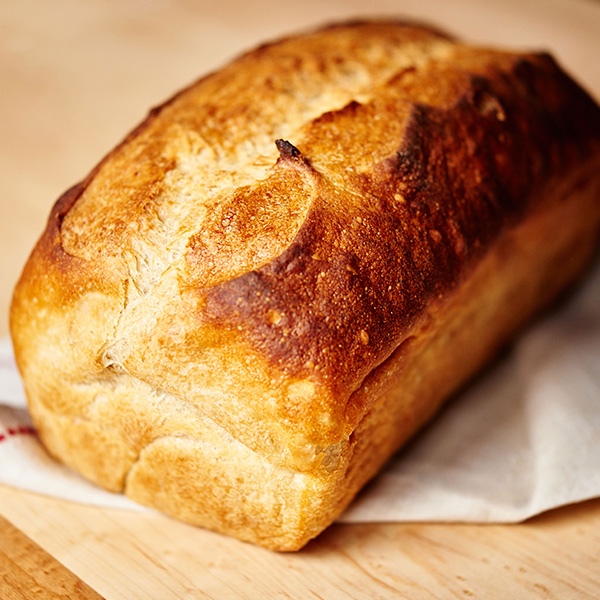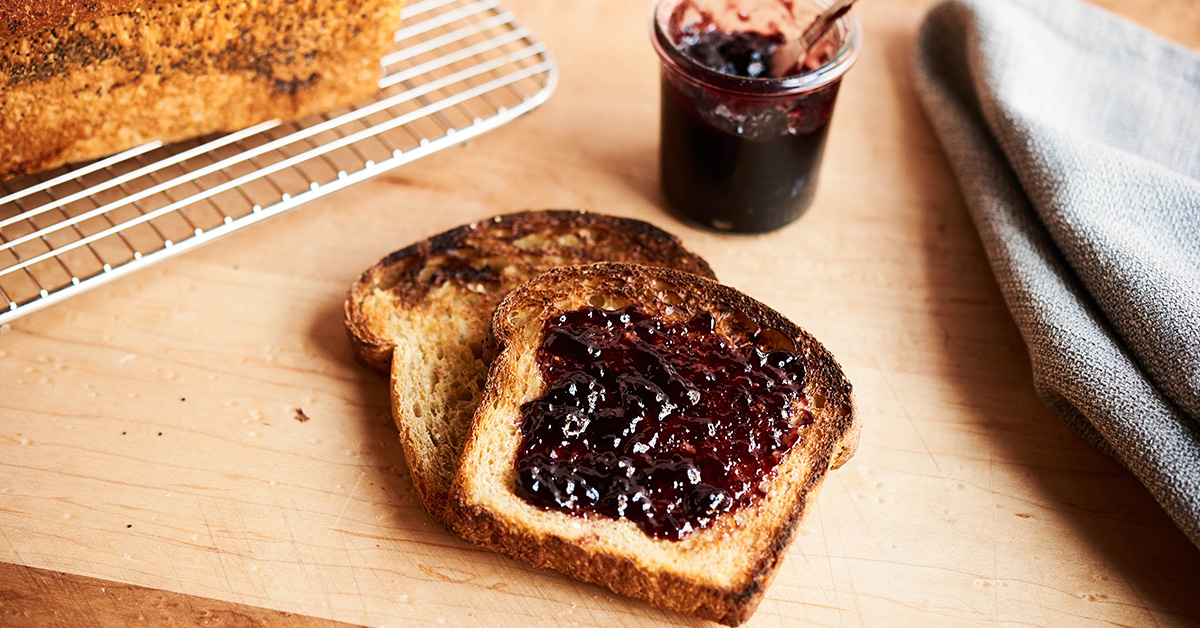From crusty French and ciabatta to soft sandwich loaves, making homemade bread is truly a culinary art. It’s important to know how to store it.
The freshness that makes artisan bread so delicious can also be its downfall. Because fresh bread is devoid of preservatives, it often goes stale much quicker than pre-sliced loaves from the grocery store. This is great news for flavor, but bad news for long-lasting quality.

Since quality and taste are at the heart of bread baking, it’s important to know how to store bread properly. Once you learn the basics, you’ll never risk your fresh bread going stale before you’ve had the chance to enjoy it.
Whether pretzels or bagels, you can find a way to make the shelf life of your bread really stretch, lest we waste one crumb of these delicious, carbohydrate masterpieces.
So how do you keep fresh breads from going stale? Let’s explore.
There are many methods for how to keep bread fresh, varying on the type of bread and desired length of storage.
Each method prevents exposing the bread to extreme dryness or moisture, keeping it just right. By looking at some common methods of storage and examining the pros and cons of each, you can decide which method is most appropriate for your type of bread.

Option 1: Leaving your bread out out
Usually, when left out uncovered, bread will form a crust and become quite stiff and stale. There’s a reason restaurants serve their bread in cloth-lined baskets. Aside from a charming visual, the cloth protects the bread from drying out.
Drier climates also cause bread to dry out rather quickly. Breads that contain fat, such as Parker House rolls, will fare better for longer.
Generally speaking, bread shouldn’t be left out for extended periods of time. However, if the outer edges of your bread have become stiff from sitting too long, the bread inside may be just fine. Simply slice off the hardened outer portions with a bread knife and then use a different method to store the rest.
Option 2: Store your bread in a bread box
These days, most people think of bread boxes as an antiquated part of the phrase “is it bigger than a bread box?” and not much else. But truthfully, these old-fashioned contraptions should make a comeback.
Bread boxes are actually quite an ideal way to store bread, as they allow bread to breathe without exposing it to so much air that the bread dries out.
Bread boxes don’t have to be built in to kitchen cabinetry. There are a variety of models that are free-standing structures, made of ceramic, metal or wood (think: covered butter dish, but bread-sized), that can rest on-top of a counter.
If you do not have space for a bread box, its results can be imitated by covering the bread with a clean, dry kitchen towel and then putting it in a paper bag. This method mimics the bread box by allowing the bread to breathe but still protecting it from the elements.

Option 3: Store the bread in plastic
Plastic can be the best or the worst way to store bread. When bread is double-wrapped in clean plastic and stored in a cool, dry place, plastic can extend bread’s life. This is especially helpful in drier climates, where bread can dry out quickly.
However, if there’s even a drop of moisture present, the water can incubate in the non-breathable plastic, making the bread mushy or worse, moldy.
Option 4: Freezing bread for longer storage
Freezing bread is the best way to keep homemade bread fresh for longer periods of time. Wrap the cooled, dry bread thoroughly in plastic. Be certain there is no moisture or condensation. The bread can be stored in the freezer for up to 2 months (you can store longer, but the flavor may suffer).
One trick for freezing bread is to slice the bread before storing, saving you time: Sliced bread thaws quicker, and you can be easily placed into the toaster for quick warming.
The worst way to store bread? In the fridge
When it comes to using the refrigerator for storing fresh bread, just say no. The refrigerator will dry out your bread. While it’s fine to put a prepared sandwich in the fridge for a few hours, storing your bread (sliced or unsliced) in the refrigerator gives it an unappealing texture and is not suggested.

Fixing stale bread
There are a few methods of softening hardened, stale bread. Interestingly, they closely mimic methods for softening brown sugar.
- Add a slice of apple to the packaged bread: The apply may soften bread enough to give it a second chance.
- Microwave magic: Place slices of bread on a moistened (but not wet) paper towel, and microwave for 10 seconds.
Give stale bread new life
Sometimes, despite your best efforts, bread goes stale.
If it’s too crispy to be enjoyed as-is, consider giving it new life as part of a French toast casserole or as homemade croutons.
Homemade bread crumbs can also be used for a number of different recipes. This way, your bread can still be a component in some good eating.

I'm looking for the best way to packaging Cinnabon so that it stays good for two weeks
Your suggestions on stale bread were veery helpful! Can’t wait to try some of them!
Is it possible to make bread dough from scratch and freeze the dough so I can put it in the oven and bake it. what would be the best way to do this?
Is storing commercially prepared bread in the fridge equally as bad as homemade? Your tips are very much appreciated. I learned how much I didn’t know and added a good deal to what I do know. LOL
I have learnt a lot. Thanks will try them
thanks this will help keeping our bread ready to eat